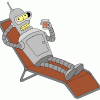In response to these last two posts, let me more clear: I am against LLLT because it is expensive and weak compared to LEDs and not different. LED is better. $5 halogen lights might be best, but I prefer LEDs for heat reasons.
Concerning pulsing, I just added a long section to my article:
http://heelspurs.com/led.html#pulseI do not actually recommend reading the above unless you are already in the business of making LED units.
This web site is making my embedded youtube helmet video not available, so here it is again:
http://www.youtube.com/watch?v=f-8ToUQEc3E
I tried my LED helmet for 10 minutes this morning at 250 Watts to see if it would wake me up, but I didn't notice anything. I tried the 48 LED infrared for 10 minutes a day for about 3 weeks and did not see any hair growth. There's only 1 thing I know light therapy works on: injuries beneath the skin. I remain skeptical about dementia, but next week I should be getting feedback from the use of my helmet on somone with it. There is a mitochondria-deficient syndrome that it might help. I remain very skeptical about wrinkles and aged skin and spots. What little research there is, is poor and seemingly financed by someone selling something. I've tried it on spots a little, but not enough to say the results were negative. An internet friend who copied my halogen light bed claims it helped his skin, reducing spots.
Concerning an office setup, I do not see a benefit, nor a feasible setup. Light therapy does not seem to help healthy cells. But sunlight, all wavelengths, is dam good for you. If heat was not a probably the healthiest lighting is halogen because it is like the sun, but the intensity needed to be nice and bright for day work is about 300 W for a small room with white cieling and walls. Lighting is one reason I work just as much on heliostat heating (reflecting sunlight into house windows). See my instructable:
http://www.instructa...at-for-heating/

















































